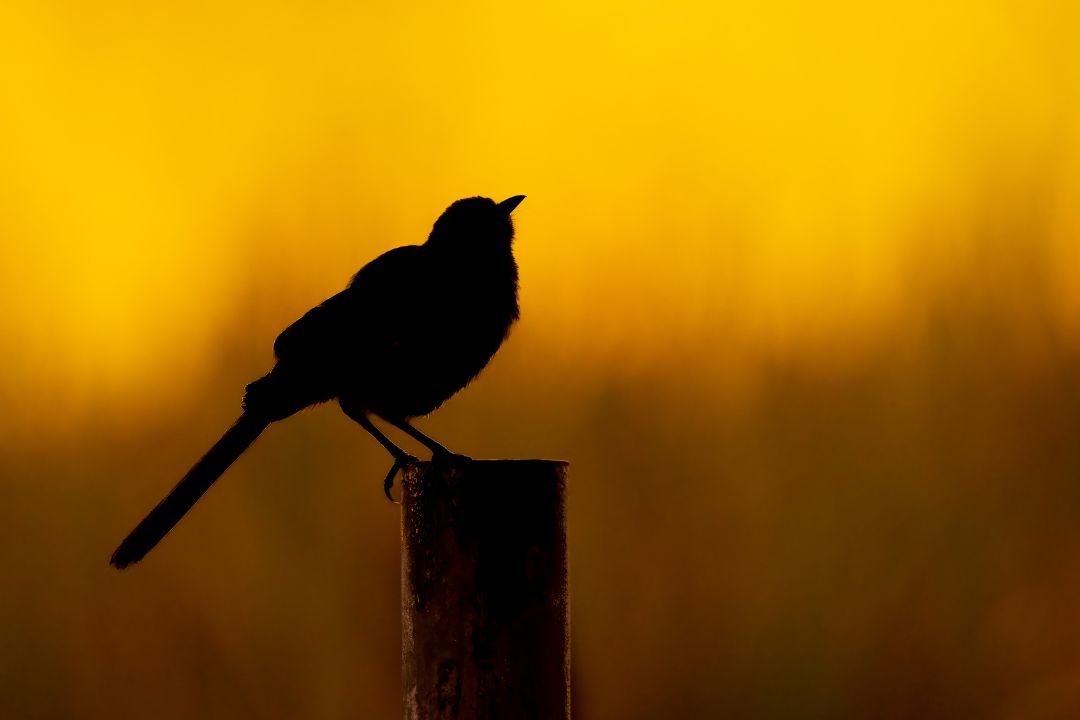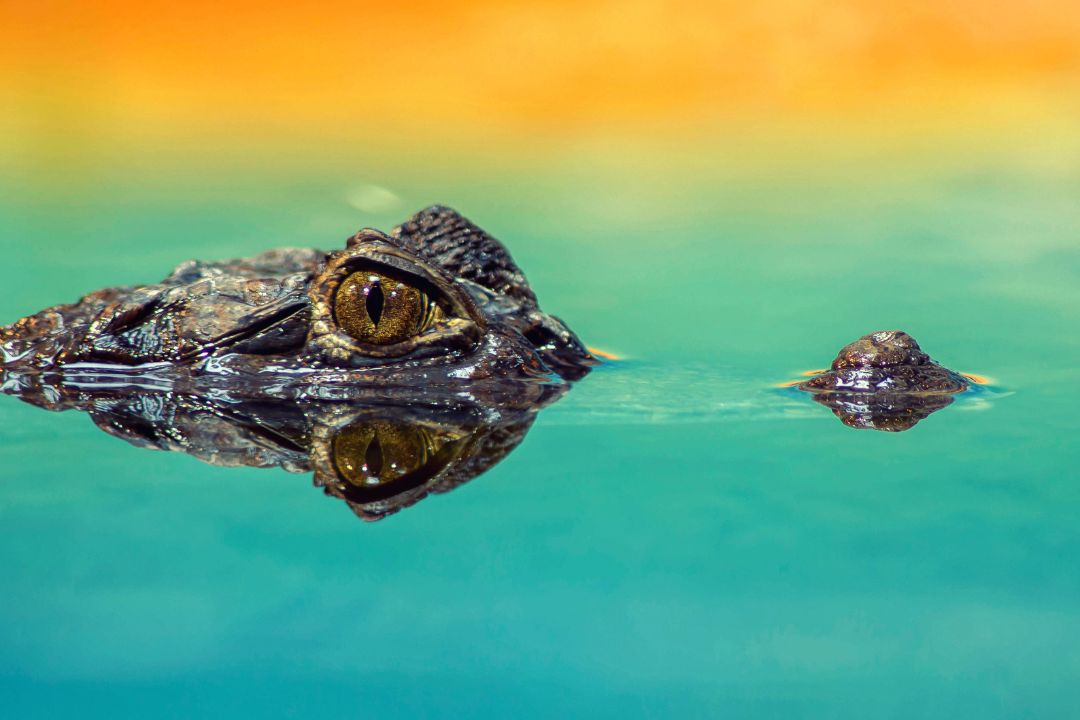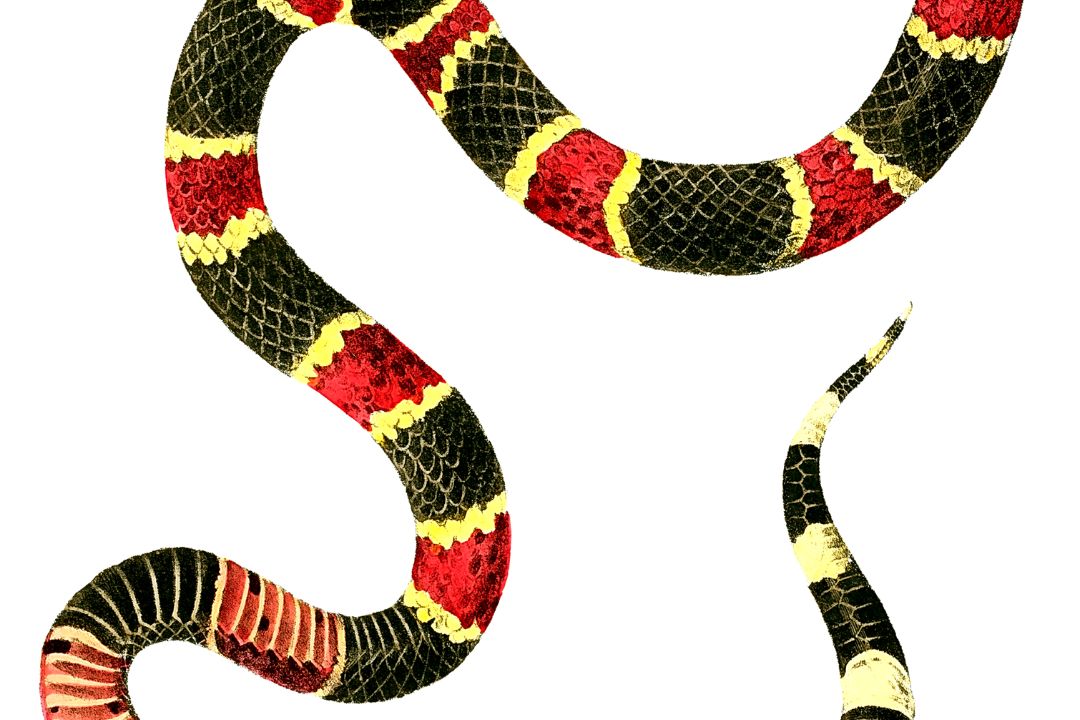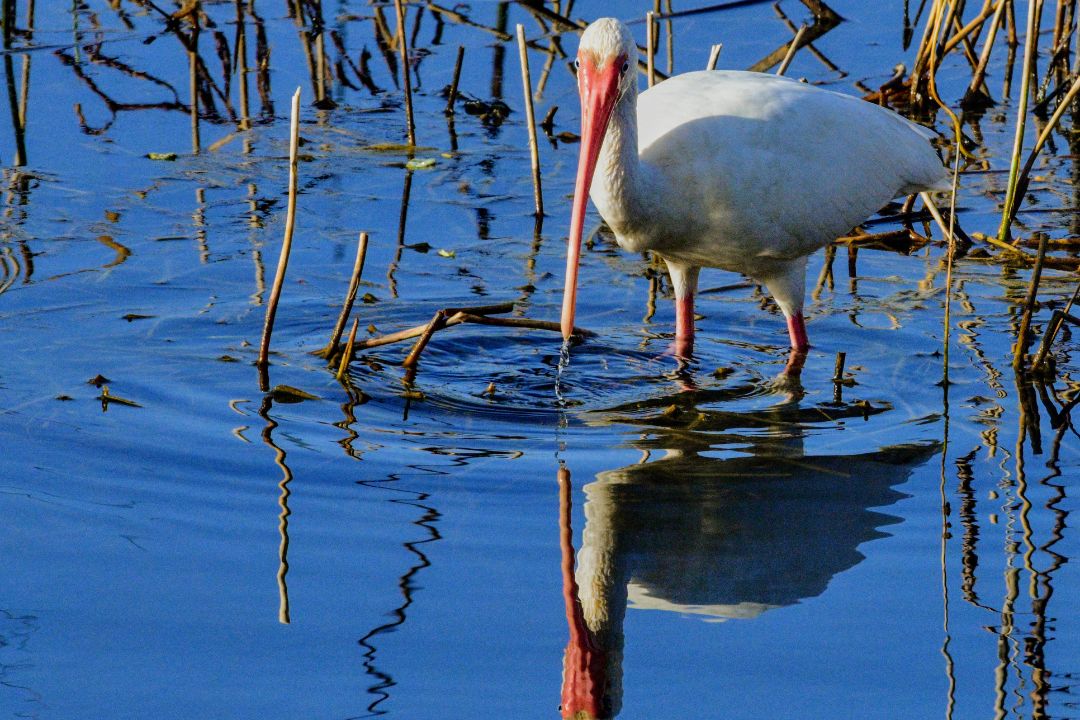A Master of Mimicry
When the dawn breaks over the vibrant landscapes of Florida, an orchestra commences. The symphony’s director is small and unassuming, yet with a voice that transcends the boundary of the avian kingdom. It is none other than the Mimus polyglottos, the Common Mockingbird, a creature whose harmony encapsulates the very essence of the state’s lush biodiversity.
This master of mimicry is a remarkable spectacle. Exquisite it may be in its plumage, but it’s not the feathered attire that sets this songbird apart. No, it’s their astonishing vocal versatility that is nothing short of a marvel. And it is in this unrivaled melodic talent, that we find a symphony that weaves the notes of countless other creatures into a unique tapestry of sound.
They are the mimics of the wild, deftly churning out melodies so convincing that on some sunlit mornings, you might find yourself fooled into a belief of having awakened in a forest teeming with an implausible aggregation of songbirds. From the twittering of Warblers to the haunting cries of Sandhill Cranes, the Mockingbird’s repertoire often incorporates the popular hits of the day, all while adding its signature touch.
Yet, there is a profound irony in this avian mimicry. For even as the Mockingbird echoes the voices of others, there is no denying its distinctive character, its unmistakable enigma. It straddles a delicate balance between an echo and an original, borrowing from the melodies it hears, all while retaining its quintessential soul. It is this ability to fold countless voices into a symphonic quilt of sound while remaining uniquely itself that makes the Common Mockingbird truly extraordinary.
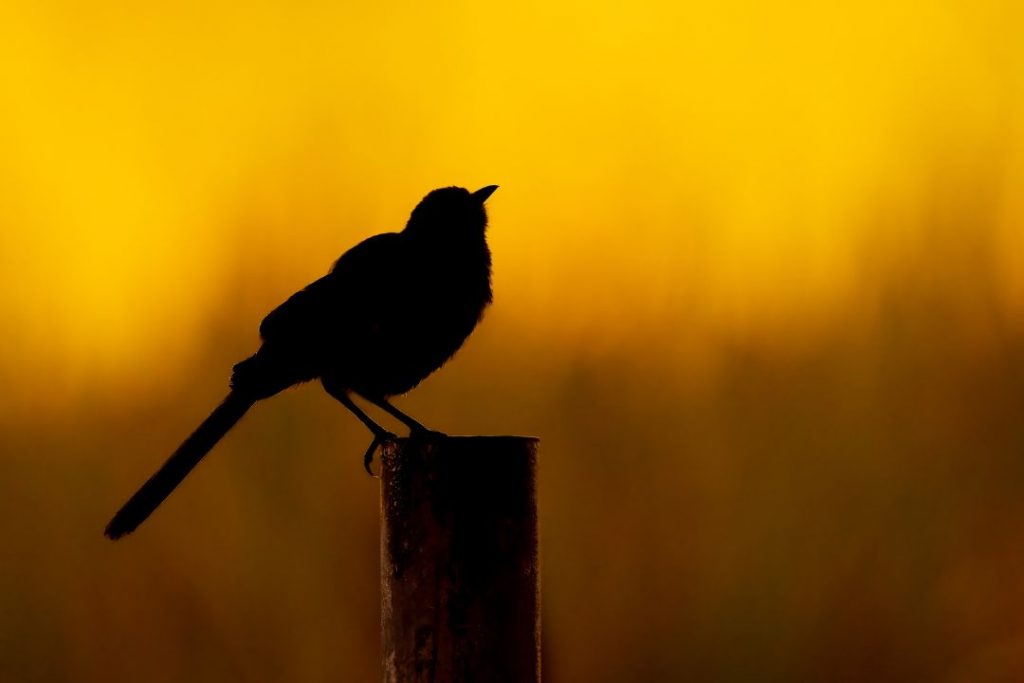
How did the common mockingbird become the state bird of Florida?
It was one magical afternoon in the year of 1927 when the melodious strains of Mimus polyglottos, the common mockingbird, intertwined with tall Floridian palm trees, causing the state to be spellbound quite intensely. A tender enchantment that would ascend to official recognition in the annals of the Florida Legislature, making the common mockingbird the crowned king of avian splendor in the Floridian lands.
The journey into the heart of Floridians did not happen overnight. Their ever-enthralling vocal abilities, caroling not merely the songs of their species, but replicating a symphony of other bird songs and sounds, made them the Phantoms of the Floridian opera. Their performances, delivered from the airy stages of flapping palm leaves and whispering pines, captivated the inhabitants and guests of the Sunny State alike, subtly whispering the essence of a Floridian morning into their hearts and souls.
This feathered virtuoso was much more than a debutante to the Floridian scene. Its comely plumage of gray and white was no stranger to the Florida dwellers, from the coastal scrub to the inland forests. Dynamically adapting to Florida’s varied landscapes, the mockingbird graced each with its distinctive melody. A sonnet of belonging that echoed in the hearts of Floridian ornithologists, casting a vote in favor of this bird being the state symbol.
While other states chose their avian mascots based on color, rarity, or size, Florida, in its typical idiosyncratic fashion, chose to honor the extraordinary vocal prowess and adaptability that defined the mockingbird’s distinctive persona. A trait resonant with the spirit of Floridians, who celebrate diversity, agility, and vibrant vivacity even in their avian emblem.
The 1927 Legislature of Florida, moved by this unparalleled charm, unanimously passed Senate Concurrent Resolution No. 3, designating the common mockingbird as the official state bird. An ode to the audacious adaptability of this bird, highlighting its flamboyant operatic lifestyle that resonates with the state of endless sunshine and warm beaches.
And thus, with the delicate twine of legislative decree and heartfelt sentiment, the common mockingbird embarked on its zealous odyssey as the official state bird of Florida, a role it fills to this day, with its tireless vibrato echoing vibrant, melodic tales of the state’s rich natural heritage and diversity.
What is the scientific name of the Florida state bird?
When it comes to the official designation, the Florida state bird goes by a name that echoes scientific precision and ancient complexity – Mimus polyglottos. This Latin moniker, steeped in both truth and a measure of poetic satisfaction, is an ornithologist’s way of acknowledging the bird’s remarkable linguistic prowess.
To delve into the roots of this name, one must first unpack Mimus. A term borrowed from the ancients, it evokes images of Greek theater, of actors shrouded in hilarity and bravura. The word itself translates to ‘mimic’ or ‘actor’. In essence, it befits the bird’s incredible ability to mimic a myriad of sounds ranging from the pensive hoot of an owl to the trilling melody of a neighboring songbird.
The second half of the binomial nomenclature, polyglottos, is a word echoing with multiple tongues. Derived from the Greek words poly, meaning ‘many’, and glottos, meaning ‘tongue’, it further underscores the mockingbird’s legendary aptitude for aural imitation.
In the grand tapestry of nature, each creature has a role, a purpose, a name. For the Mimus polyglottos, it is to croon in a thousand different dialects, to mimic the music woven by its winged peers, and to eloquently justify the scientific designation it so proudly bears. Truly, the name gives a slight hint to the encore performance one can expect from this melodious Floridian resident.
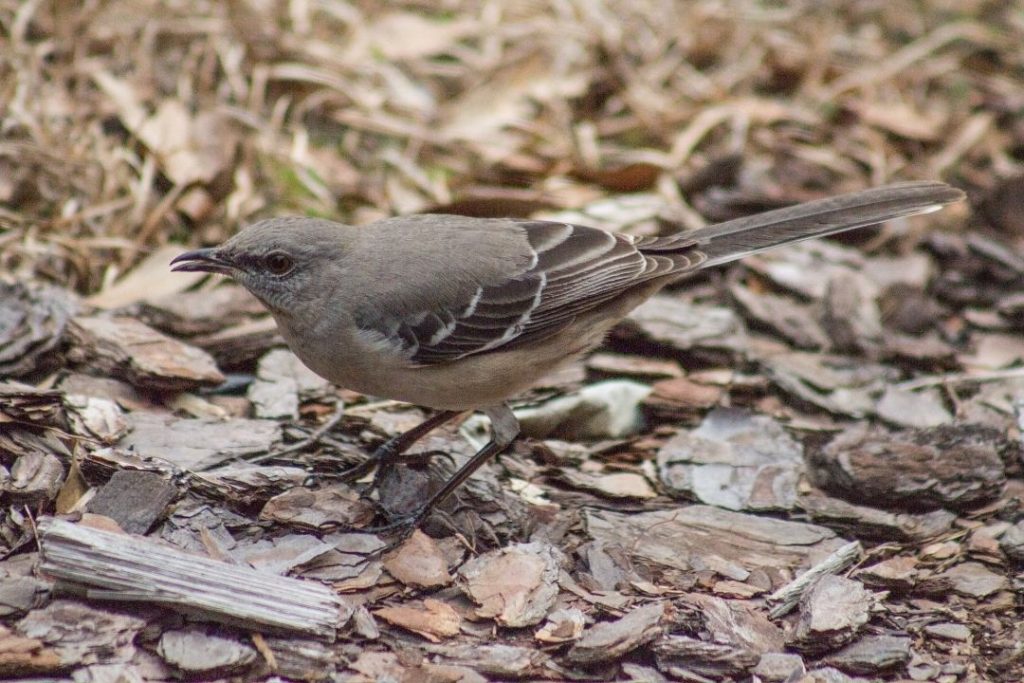
The Mockingbird’s Musical Repertoire
As I cast my mind back to my days spent in the company of Florida’s official avian maestro, I’m enthralled by the breadth and depth of the Mimus polyglottos lyrical repertoire. The Mockingbird’s unique voice is no less than a testament to Nature’s orchestral mastery. This bird, my friends, is not just an adept vocalist but an extraordinary mimic! Let’s delve deeper into this aspect of its astounding showmanship.
The mockingbird, true to its name, boasts an expansive sonic library, the likes of which are unparalleled in the avian world. It has the uncanny ability to replicate a diverse range of sounds – from the melodies of other bird species to the cacophonous rumble of urban machinery. The spectrum of their musical prowess is such that one might be left wondering if an entire orchestra were nested within its feathered chest.
Often perched upon a conspicuous, high branch or upon the eaves of a roof, every rise and dip of their melody cuts through the silence of a Floridian morning like the finest symphony.
Consider this remarkable talent of theirs: they can memorize and replicate up to 200 distinct songs in their lifetime. Astrophysical phenomena, I believe, bear an uncanny symmetry to this musicality – unfathomably complex, yet imbued with an intrinsic order; an elegant dance of chaotic harmony. How does the common Mockingbird accomplish this? The answer lies in their anatomy which allows them unmatched control over their syrinx (the avian equivalent of human vocal cords) granting them the ability to generate an incredible array of vocalizations; a concert in miniature.
Let’s take note; this magnificent creature’s voice is not merely a matter of replication. Each mockingbird crafts its set of unique variations, conjuring a creative symphony from the world’s ambient noises. It stands as a testament that even in mimicry, individuality shines through.
Their performances are not round-the-clock affairs, but well-timed recitals often taking place at dawn, dusk, or during moonlit nights. It is thought that the performances are especially brilliant during the full moon with their beautiful tunes echoing in the still night air.
Their songs are not simply for amusement. In the world of the Mockingbird, the quality of their performance has serious implications. It signals physical fitness and cognitive complexity to potential mates, and provides auditory boundaries for territorial demarcation. Theirs is a song of survival, a melody of mastery over their domain.
And so, our Florida Mockingbird draws in listeners of all sorts. Whether they’re an awakened resident comforted by the melody breaking the silence of the early morning, or a birdwatcher riveted by their sheer talent; the Mockingbird’s musical repertoire is indeed a symphony of the sublime, a testament to nature’s unending creativity.
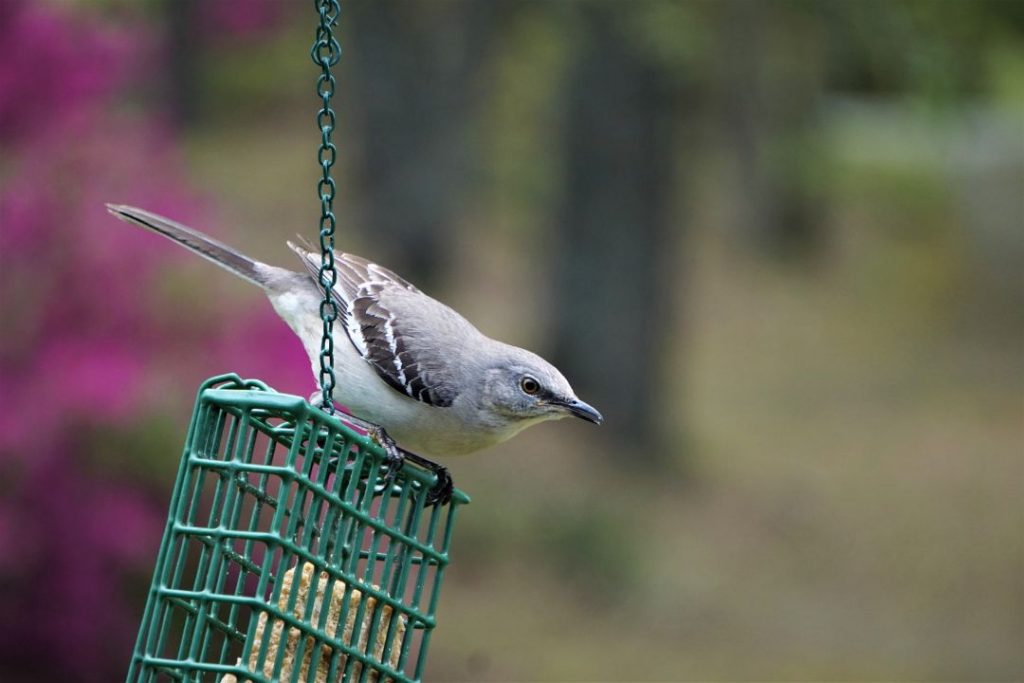
Behind the Name: Mimus polyglottos
Peel back the layers enshrouding the Mockingbird’s scientific name, Mimus polyglottos, and you reveal a delightful nod to the bird’s most renowned ability. The genus name ‘Mimus’ is an unambiguous testament to the bird’s talent, hailing from the Latin word for ‘mimic’. Yet, it is the species designation ‘polyglottos’ which veritably sings of the Mockingbird’s linguistic prowess. Originating from the ancient Greek words ‘poly’ meaning many and ‘glottos’, referring to tongues or languages, it indisputably recognizes the bird as a master of multiple dialects. Thus, the name, when pieced together, fittingly translates to ‘many-tongued mimic,’ a poetic homage to the Mockingbird’s extraordinary musical and mimicking skills.
Scientifically christened so by Carl Linnaeus in 1758, the name Mimus polyglottos was the fruition of the renowned naturalist’s close observation of the species. It was Carl Linnaeus who first documented the Mockingbird’s incredible talent of replicating sounds from its environment, ranging from other birds’ songs to, even, man-made noises. He duly recognized this phenomenon by immortalizing it in the bird’s name. A name which not only defines the bird but also sets it apart in the avian world.
With its name, each Mockingbird carries not just a linguistic emblem, but a compelling narrative that continues to unfold through its aural tapestries. As nature’s exquisite parodist, it eloquently echoes the diverse voices around it, bringing timeless delight to observers and the curious. For the Common Mockingbird, our Mimus polyglottos, the name is a fitting tribute to its unparalleled vocal prowess and mimicry, underlying its eminence in the fascinating world of birds.
The Mockingbird’s Impressive Imitations
To engage with the wonder of the mockingbird, one must appreciate its astonishing talent for mimicry. It is a most riveting saga to delve into. Picture yourself on a warm Florida evening, with a cool breeze brushing softly against your skin. Amid the lull of nature’s symphony, a solitary song stands out. It is a melody so intricate and varied, you’re left breathless, captivated. This, dear reader, is the effect of the mockingbird’s performance—an extraordinary exhibition of imitations that defies the norm.
It is not merely the diversity in the mockingbird’s melody but also its capacity to flawlessly replicate a range of sounds, from the trilling of other bird species to the jarring ring of an alarm clock, that is truly astounding. The mockingbird—Mimus polyglottos—is verily a polyglot, a master of many tongues.
This constant tweaking and expanding of their musical repertoires is not a frivolous pursuit—it serves crucial purposes. Firstly, female mockingbirds tend to favor mates with a greater song variety, which indicates a healthy and intelligent partner. Secondly, the song repertoire allows mockingbirds to claim territory and ward off intruders. Hence, the mimicry serves survival, and in the process, graces us with a symphony of sounds.
However, what truly sets the mockingbird apart is its ability to sing through the night. So, imagine these quiet, witching hours filled instead with a robust chorus of melodies—each borrowed from a different source yet emitted flawlessly, proving that the universe gifts each one of its creations uniquely.
Humans, we believe, are the superior mimics. When we witness a creature of the wild displaying mimicry resembling our own, it prompts us to appreciate the marvels of evolution and the enchanting continuity of life. So, venture out into the subtropical twilight of Florida and, in the still solitude of the night, discover the grand opera of the bustling day carried on by a solitary, silhouetted figure perched high against the starred canopy—Florida’s state bird, the mockingbird.
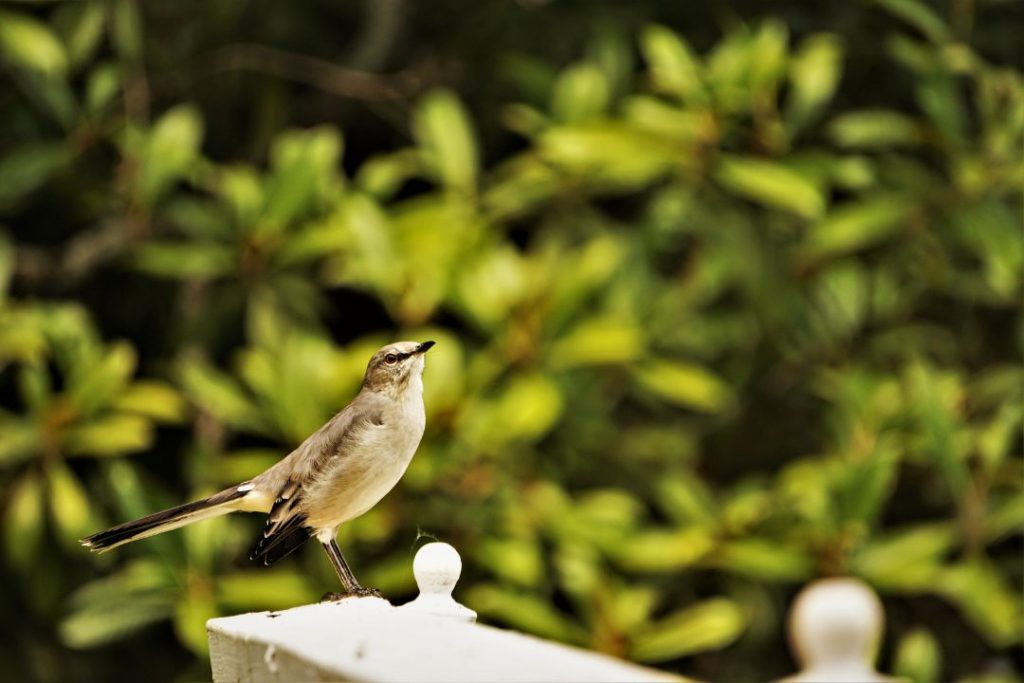
A Chorus of Voices
In the grand symphony of nature, the Common Mockingbird holds its own with an astounding array of vocalizations. It is as if the aviary world has organized an opera, and our feathery Floridian has been allotted the role of the diligent maestro, presiding over the medley with its dynamic versatility.
The captivating ability to mimic a vast spectrum of sounds, not only from numerous bird species but also from other animals and from everyday environmental noises, results in the creation of a glorious, ever-changing aural tapestry interwoven with deception and authenticity. It is by no means an exaggeration to assert that the mockingbird is a virtuoso capable of conducting the most complex orchestra.
This skill is not simply for display or amusement. Rather, it serves fundamental purposes in the bird’s survival and reproductive strategies. A male bird with a rich repertoire of songs is likely to attract more females, while simultaneously signifying to potential rivals that he is a formidable contender for territory and mating rights. It is a sonic duel in the wilds, one that reveals survival’s beautiful intricacies through layers of the echoed sound.
“It is as if nature is humming to itself. The mockingbird, in its ceaseless quest for sonic perfection, elevates the cacophony to a revelatory chorus.”
Curiously, mockingbirds do not rest with creating a pastiche of avian calls alone. They often expand their oeuvre to include artificial sounds like car alarms, sirens, or even the odd cell phone ringtone. As a species that thrives on adaptation and evolution, mockingbirds prove they can tell the stories of their surroundings, whether they be serene groves or bustling urban landscapes.
Research has shown that mockingbirds are selective listeners, choosing to mimic sounds that have a particular structure or pattern. They are not passive receptors but ensure their vocal output maintains a balance between randomness and familiarity. This nuanced negotiation between originality and imitation enhances their allure, turning the gentle motif of mimicry into a chorus of voices, a true testament to the bird’s adaptive intelligence and artistic vibrancy.
The Mockingbird’s Unique Adaptations
Nestled within the paradox of survival, where simplicity is obscured by complexity, the Common Mockingbird – Mimus polyglottos – imbued with a meticulous brush of nature’s finest artistry, has been gifted with distinctive adaptations that have influenced its existence in the vibrant tapestry of Florida’s ecosystem. Let’s journey into this intricate universe of bird biology, where adaptability is not merely an act of survival, but a testament to the mockingbird’s resilience and ingenuity.
The first, most salient characteristic perhaps, is the mockingbird’s audacious vocal capabilities. This is not just a result of physiognomical infrastructure. The bird’s syrinx, an organ analogous to the human larynx, is an orchestra of its own, with the capability to produce a vast range of sounds, including the mimicking of other avian songs, alarms, and even mechanical sounds. It’s a complex mechanism that allows the Mockingbird the linguistic fluidity of its polyphony.
One does not simply ignore the vitality of the mockingbird’s vision, as it underpins their dendritic navigational skills in mapping out their territorial boundaries. Its eyes, like twin orbs of delicate amber, have highly developed color discrimination, enabling it to thrive under the shifting veils of the Floridian skies. This acute sight bolsters its prolific hunting abilities, allowing it to zero in on its unsuspecting insect prey with lethal precision.
In tandem with their impressive vision, the mockingbird’s wings – a flawless symphony of feathers and muscle – are more than just an instrument of air-bound travel. These appendages have evolved to perform vital signaling behaviors during the bird’s territorial displays and courting rituals. From the flick of a tail to an ostentatious flash of shimmering gray, these visual communications serve as complex social cues in their intricate societal dynamics.
Equally captivating is the bird’s cognitive acumen, as Mother Nature has generously endowed it with the ability to remember its environment. Maintaining vast repertoires of songs, altering tactical strategies in response to changing environments, remembering successful foraging areas, and recognizing potential threats from past encounters, the mockingbird’s cognitive flexibility demonstrates an almost human-like breadth of understanding.
In conclusion, the Common Mockingbird thrives within the parentheses of its distinctive traits. These attributes are testimonies of endurance and adaptability, exuding the wisdom of the ages, and resonating with the past’s unbroken lineage. Each strand of its DNA, each quiver of its feathers, each note of its musical anthology, is echoed in the enduring adaptability of this living emblem of Florida.
What is the conservation status of the common mockingbird?
As for the cherished common mockingbird, one might question about its current environmental stand. Is our mocking maestro thriving, or are shadows forming on its sun-dappled stage? In the discussion of conservation status, we fortunately find a positive note. According to the International Union for Conservation of Nature (IUCN), the common mockingbird has been classified as a species of ‘Least Concern’. This title, however far from suggesting negligence, assures that our feathered friend is not currently facing an immediate threat of extinction.
For an avian performer whose orchestra spans from Florida’s green canopies to the diverse landscapes of both North and South America, this is a testament to the mockingbird’s vitality and adaptability. Its widespread distribution, substantial population size, and versatile eating habits largely contribute to this reassuring status. The mockingbird’s diet is a carefully arranged symphony of insects and fruit, a culinary combination that can be typically found in suburban areas, urban parks, as well as their native, rural habitats.
Despite the relief these facts bring, they should not lull us into a sense of complacency. The backstage of the common mockingbird’s life can still hold threats. Alterations in its habitat due to urbanization and climate change are among topics that merit monitoring, even under an optimistically green spotlight of ‘Least Concern’. These deceptively mild changes can subtly, yet steadily, disrupt the bird’s nesting sites and food sources, subtly undermining its ability to continue to charm us with its melodic verses.
Therefore, the ‘Least Concern’ status should not encourage indifference, but rather provide a beautiful motive for continued conservation efforts. The tale of the common mockingbird — our Mimus polyglottos — is an ode to resilience, but it falls upon our shoulders to ensure this illustrious ballad continues to resonate through Florida’s verdant hammocks and beyond.
Why is it important to conserve the common mockingbird?
The vitality of safeguarding the common mockingbird far exceeds its personable allure or the ethereal melodies it graces us with. Rather, its existence is a tether that binds together the complex mechanisms of our ecosystem in an intimate dance of life and survival. Their importance is not to be undermined by their abundance, for the role they play is immense and meaningful.
As omnivores, these feathery creatures play a vital part in balancing prey populations, sustaining a crucial equilibrium in our ecosystems. From beetles to spiders, their diet aids in keeping a check on insects that could otherwise grow overwhelming in number. This unassuming little bird thus becomes an integral cog in the grand structure of life.
But, their effect transcends this. The common mockingbird is a pollinator as well. As they relish on berries and fruits, they inadvertently disperse seeds across landscapes, becoming a vehicle for plant propagation. This not only aids in the biodiversity of flora but, in turn, promotes a healthy habitat for other fauna. Their loss, therefore, would be a shockwave through this delicate balance.
Yet, their importance doesn’t stop there. A mockingbird’s nuanced behaviour, its pattern of nest-building, courtship, and territoriality, provides researchers with valuable data, aiding significant scientific advancements. The observation of these birds has become instrumental in our understanding of ethology – the study of animal behaviour.
The Reverberation of Their Absence
Imagine a world devoid of the common mockingbird’s fluid song, their absence representing an impending silence in the rich tapestry of our ecology. The loss of these avian wonders would dismantle trophic structures, disrupt pollination, and erase their intricate, musical mating rituals from our world.
Conserve. This plea resonates deeply and urgently, because these feathered minstrels, these jesters of nature, these creatures of song and survival, represent far more than just charming companions to our dawn choruses. They are a testament to nature’s delicacy, resilience, and poetry.
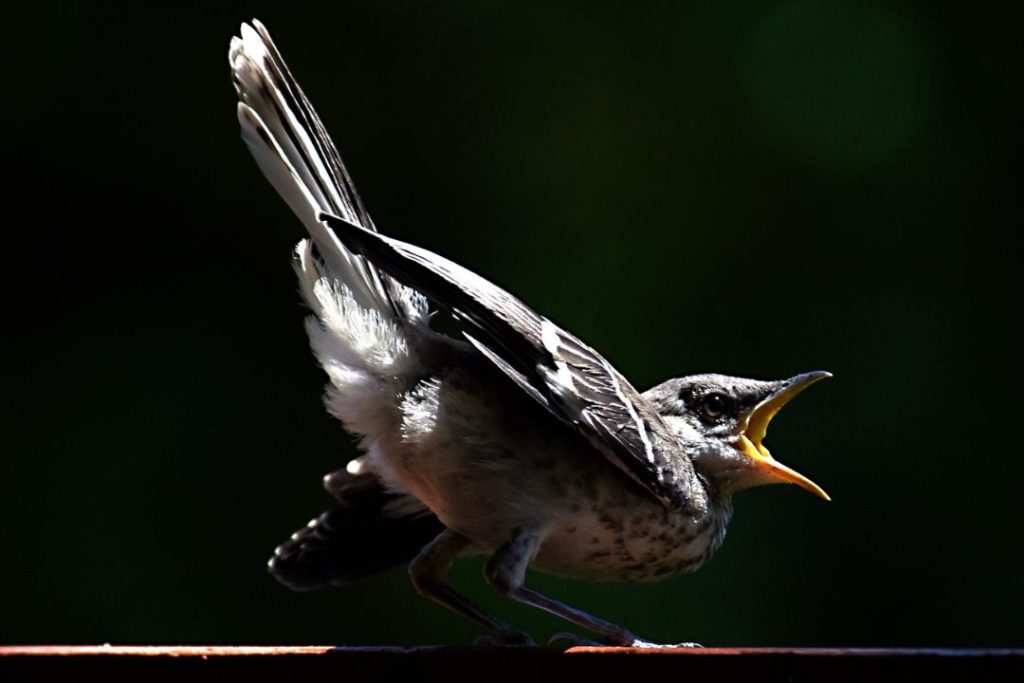
What are some conservation efforts for the common mockingbird?
Conserving the common mockingbird, a beloved emblem, and a familiar melody of Florida, requires the cohesive participation of various players, from professional organizations to everyday individuals. Here are a few of the initiatives and guidelines that have formed part of the broader tapestry of our struggle to protect this charmingly versatile creature.
- National Audubon Society’s Bird-Friendly Communities: This program promotes the creation of safe spaces for birds like the common mockingbird in our own backyards. They advocate for the use of native plants which provide natural food sources and covers for the birds, and they raise awareness around the dangers of outdoor cats and window collisions to our feathered neighbors.
- American Bird Conservancy’s Bird-Smart Glass Initiative: Recognizing the peril that our passion for glass imposes on these flying artists, this initiative encourages the use of bird-friendly designs that can lessen the unfortunate toll on bird populations due to window strikes.
- The Cornell Lab of Ornithology: Their citizen-science project, known as NestWatch, invites regular individuals to contribute to ornithological research by monitoring bird nests, which provides valuable information about life cycles, reproduction rates, and the impact of environmental change. We, too, can play a part in nurturing the story of the mockingbird, and other species, furthering science’s understanding and ability to act.
- Laws and Regulations: At the legislative level, the federal Migratory Bird Treaty Act protects the common mockingbird among other native bird species. It prohibits the hunting, capturing, killing, selling, trading, or transport of protected bird species without specific authorization.
- Sanctuary Creation: Organisations like the Audubon Nature Institute have created bird sanctuaries that provide stable and safe environments for birds, securing a future for them despite our cities’ expansion and unending appetite for growth.
- Public Awareness and Education: Conservation is no solitary quest; it’s a communion of hearts ignited by the same fire. The essential task of propagating knowledge and fostering understanding about these birds, their needs, and their threats, falls to every one of us. Each booklet distributed, each word shared or written, carries the power to fashion a soft shield around our treasured Mimus polyglottos.
Ultimately, the safeguarding of the common mockingbird is not a battle outside of us, but within. As we have claimed dominion over land and tree, it falls to us to make room for those whose ancestral songs festoon our dawn and dusk. Our homes, our laws, our science – they are all threads in the rich tapestry of conservation. And in this web of relationships, we find space not merely for the flourishing of a single species, but for a more harmonious coexistence of all life. And isn’t that the true melody we yearn to hear – a melody not marked by domination or neglect, but by balanced existence and shared melody, a tribute to life’s mesmerizing variety?
Intricate Feathers: A Closer Look
The artistry of nature is nowhere as manifestly demonstrated as it is in the delicate art of feather formation of the mockingbird. Wrapped in a tasteful ensemble of grey and white, the plumage of Mimus polyglottos is a display of natural elegance. This is an exquisite tapestry of subtle sophistication and evolution’s handiwork, every detail telling a story of adaptation, survival, and coexistence.
The soft grey of its body is punctuated by two distinctive wing bars and white patches, highly visible in flight. It is a visual show of discipline and restraint, an example of the adage less is more. Such small, demure details belie the complexity integral to their construction, each feather a miracle of biological engineering, light yet durable, flexible yet robust. Through a lens, a marvelous world is revealed, the grey feathers are in fact a multitude of transitory hues, formed by minute structures pigmented at the microscopic level.
But it is not all about looks. The impervious strength of the feathers provides efficient insulation and protection against the elements while flight feathers show unerring symmetry, an architectural marvel responsible for the bird’s effortless aerial fanfare. A shield against predators and a canvas for courtship, the feather is a tool of survival and lineage legacy.
Yet, beneath the monochrome serenity lies a poignant reality – the very pattern and structure of the feathers speak of their user’s diet, life quality, and habitat. A chemical analysis of a feather’s composition can reveal whether the mockingbird feeds on succulent insects, juicy berries, or a balanced diet of both. Stressors and daily struggles faced by this creature are told through diverse patterns on these fascinating structures.
Nonetheless, the mockingbird’s feathers do more than just shielding it from the vagaries of nature, they serve as the backdrop upon which the bird sings its song, imprinted with the haunting echoes of a billion-year-old evolutionary saga. As we look deeper into the intricacies of the mockingbird’s feathers, we stand witness to the passion of a life striving, thriving, and survivin,g amidst the unending challenges posed by nature.
From Territories to Courtship: Fascinating Behavior
The captivating world of the Common Mockingbird expands far beyond its musical prowess and stunning features. It is riveting to observe its behavior which dances from territorial defense to ardent courtship rituals. Direct our senses, then, to a journey through the life of the Common Mockingbird, its dominions and romantic rites, and the illuminating moments that make it so extraordinary.
The Wild Contours of a Mockingbird’s Territory
One of the hallmark behavioral traits of the Common Mockingbird is its fierce territoriality. With domains varying in size, they zealously guard their spaces from intruders. Both the daylit world and the shadowy realm of the night bear testimony to the relentless vigilance of these winged guardians, a round-the-clock commitment writ-large in their flying shadows, manic tempo, and striking vocalizations.
Battle cries echo across forests and suburbs alike, their invasive notes disrupting the calm with fervent warning. They lunge and dart, dive and swoop, their actions embodying simulacrums of the aerial warfare that defines their tenacity. The intimidation from this oft-songbird becomes a spectacle in itself, a dramatic illustration of Darwin’s survival of the fittest.
The Mockingbird’s Courtship: A Melodious Pursuit
In contrast to such tempestuous territorial behaviors, the courtship rituals of the Mockingbird blazes into view like a flowery ballad. Here, the males revel in theatrical displays of expressive singing, serenading potential mates with complex arrangements of tunes, both original and borrowed.
With a fervor that rivals even the most romantic poets, males perform intricate dances in flight while broadcasting their melodies. Precise, eloquent flutters and deep sweeps of their grey and white wings, a hyphenation of light, become like sentences in a language of love – a dance that speaks of promises, beguiling their chosen ones with songs spun from the dappled rays of a Floridian sun.
The observer, watching this suitor’s tireless pursuit from afar, can’t help but be mesmerized by this singular passion, a dedication that sharpens into focus the tactile wonder of Mother Nature’s design. From such performances of monogamous allegiances are hatched the next generation of these versatile avians.
To observe a Mockingbird’s behavior, from its fierce territorial defense to its passionate courtship rituals, is to step into a dramatic world that unfolds daily in the skies and branches of Florida.
These riveting scenarios of territorial disputes and undulating courtships paint a vivid tableau, keeping one’s interest ever piqued in the fascinating life of Mimus polyglottos. The common Mockingbird is anything but common, and in every swoop and serenade, we uncover yet another facet of its abundant charm.
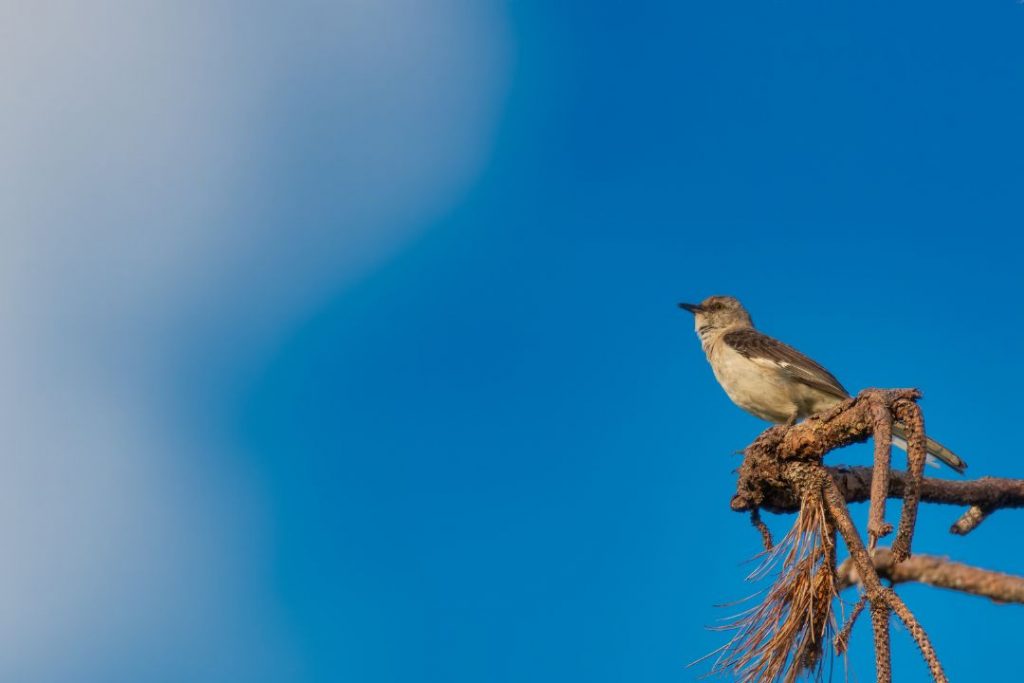
The Mockingbird’s Role in Florida’s Ecosystem
Perched serenely upon a long-stretched branch, bathed in the gentle, ethereal touch of the Floridian sun, the Common Mockingbird is truly an unsung hero within the vibrant tapestry of its ecosystem. Often overlooked among the more flamboyant players of the biosphere, this modest avian wonder plays a role utterly instrumental in environmental harmony and stability.
Our tale begins within the smallest of spaces, nested within the luscious flora of the Sunshine State, where a subtle, yet potent, interaction takes root. Mimus polyglottos, or Common Mockingbird, is an avid insectivore, feeding voraciously on a variety of insects including beetles, ants, bees, wasps, and spiders. By regulating insect populations, the Mockingbird serves as a vital check against infestations that could otherwise severely harm plant life, thereby ensuring the green hues of Florida’s landscapes do not fade into dismal grey.
Yet, the Mockingbird’s role within the parameters of its environment extends far beyond these predatory dynamics. As they flit from branch to branch, foliage to foliage, Spirited Mockingbirds partake in an age-old dance of pollination. Specks of pollen clings tight to their delicate feathers, waiting to be aptly transported to neighboring flowers and catalyzing the cycle of reproduction. This seemingly inconsequential act inadvertently ensures the proliferation of Florida’s iconic and diverse vegetation, painting a picture of abundance and vivacity.
Delving deeper into the intricacies, the nesting habits of these birds not just give them a home but benefit the ecology around as well. By building their nests in a wide variety of trees and shrubs, they inadvertently aid in the distribution and germination of seeds. The droppings from the birds contain undigested seeds that, upon landing on the ground, find a new place to germinate and grow. This natural process of sowing the seeds of life further enriches the vegetative bounties of Florida.
An ecosystem, they say, functions very much like a symphony. Each organism, a humble performer, brings their distinct note to the grand musical performance of life. Listen closely, and you will hear the harmonious strains of the common Mockingbird’s melody woven into this spectacular symphony. It is considerably more than a melody to our ears – it is the melody of a functioning, thriving ecosystem, the serenade of life itself.
How does the common mockingbird contribute to the ecosystem?
In the radiant, wild theatre of nature, every biota, every fluttering feather and rustling leaf, each contributes to the seamless, symphonic waltz of life. In such an intricate dance, the Mimus polyglottos, fondly known as the common mockingbird, plays a range of roles with admirable versatility. Let us dive deeper into this vibrant tapestry, immersing ourselves in its tangible strands and celebrating the ecological contribution of our central character – the mockingbird.
The Subtle Seed-Sower: Many organisms unknowingly partake in this ballet of biodiversity, scattering life’s potential as they seek sustenance. As beacon-bearers of botanics, the mockingbirds passionately engage in a phenomenon called ‘seed dispersal’. Enjoying a wide array of fruits in their diet, they consume the seeds along with the sweet pulp. Passing through their digestive tract unbroken and emerging unscathed amidst bird droppings, these seeds, bestowed with an opportunity, burgeon into vibrant plant life.
The Diligent Dustman: Mockingbirds fully engage in the scrupulous task of maintaining the tidiness of their immediate environment. Fervently feeding on insects and arachnids, they assist in controlling the population of these small creatures, thus ensuring balance in local ecosystems. Their diet of beetles, ants, spiders, and more contributes to the regulation and management of pest populations, preventing them from escalating to pestilent proportions.
The Vibrant Vanguard of Flora: Mockingbirds play a relentless role in pollination, serving as crucial vectors in the transportation of pollen. The birds frequent flowering shrubs and trees, seeking nectar and insects. In the process, their feathers catch pollen, which they then transport to other plants, facilitating cross-pollination and promoting biodiversity.
The Pulsing Heart of the Food Chain: The common mockingbird’s presence is a vital heartbeat within the food chain. Being a medium-size bird, they serve as a significant food source for larger predators such as hawks, owls, and snakes. Simultaneously, they feed on smaller insects, acting as both hunter and hunted, illustrating the cyclical nature of life.
In essence, each fluttering flight, every melodious tweet of the mockingbird, is not only captivating to human senses but is an active, dynamic force within Florida’s ecosystems. This tireless polychromatic performer of nature orchestrates a pulse of propagation, pest control, pollination, and predation. The common mockingbird is undeniably a crucial player in the ecologically diverse ensemble that is Florida’s wild and ageless symphony of life.
A Symbol of Resilience and Freedom
Perhaps more than any other bird, the mockingbird is a symbol of resilience and freedom in Florida. Largely unflappable, these avian artists courageously face any threat that comes their way, an emblem of an indefatigable spirit. It’s as though each tune they belt out in the early dawn or under the starlit blanket of night is a testament to their will – a melodious fight song that echoes through the Floridian plains.
In the face of adversity, the mockingbird – unlike many other species – does not shy away. Instead, it takes a stand, guarding its territory with a courage and tenacity reminiscent of some larger, more formidable creatures. This resilience perpetuates the mythos of the mockingbird, embedding it deeply within the heart of Florida’s culture and natural landscape.
The ways of the mockingbird align closely with the ideals of freedom, a concept held dearly in the American mindset. These birds know no master; their homes are the sprawling skies, the leafy branches, and the seemingly limitless Floridian wilderness. Judiciary of their own destiny, their life is a bold testament of self-governance, and the ceaseless pursuit of what, to them, constitute life’s essentials—territory, mate, and food. With every note they mimic, it’s as if they are singing a song of independence, teaching us the captivating story of survival and resilience.
Similarly, the mockingbird’s freedom and ability to mimic any song serves as a metaphor for our creative freedom. It encourages us to embrace and respect the ingenuity and individuality in everyone. This concept has been valued by some of the most influential writers and artists. Strong in its lack of inhibition, the mockingbird’s song invites us to discover our unique expression, much like it mimics and modifies every sound that resonates within its flightpath.
Their resilient nature coupled with their free-spirited life, their bold exploration of the sonic landscape, make them the unsung heroes of the bird world. As symbols of resilience and freedom, the mockingbirds continue to inspire us, touching our hearts with their spirited song, teaching us about the art of survival, and challenging us to express our unique voices in the vast ocean of life’s orchestra.
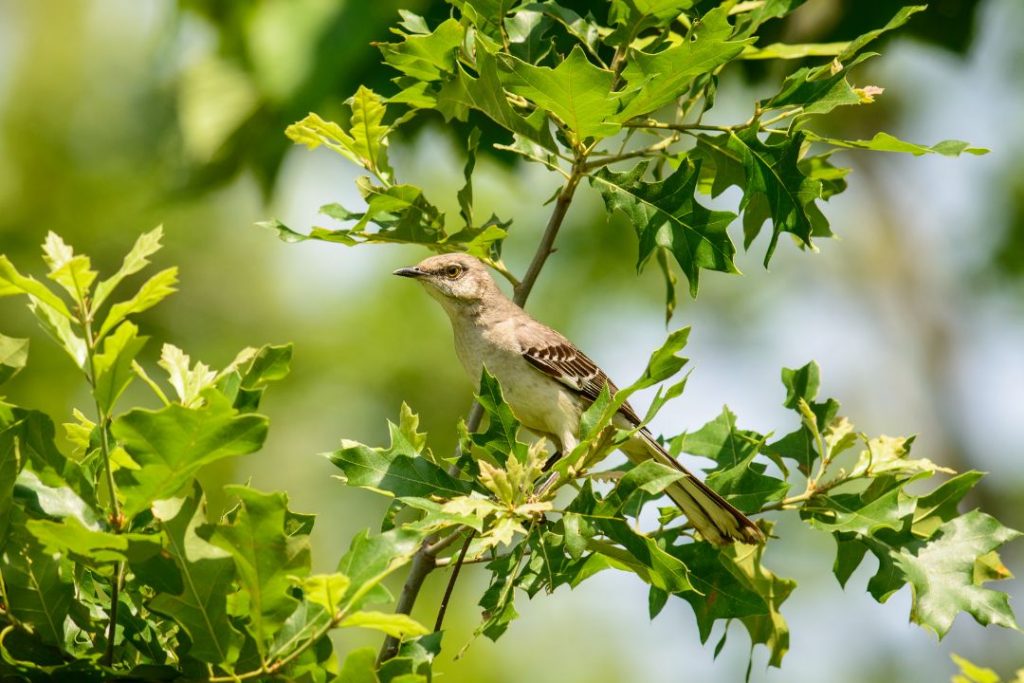
Mockingbird Folklore and Legends
In the tapestry of human history, every creature has a story, and so, too, does our beloved Mimus polyglottos. The mockingbird’s presence in folklore and legend is as multifaceted and melodious as its song. It has traversed the spectrums of symbolism, teased our imaginations, and anchored itself in the American collective consciousness.
The mockingbird’s enchanting mimicry has often been linked with qualities such as creativity, intelligence, and adaptability. In many Native American cultures, the mockingbird was seen as a creature of change, an embodiment of playful trickery, and a symbol of communication. The unique ability to mimic sounds was often perceived as the bird’s way of sharing wisdom through imitation.
Southern folklore, particularly within the African-American narratives, has been kind to the mockingbird as well. The bird, in this oral lore, is often depicted as a paternal figure guiding the souls of the deceased. The mockingbird’s song at dusk is thought to be the lulling rhythms that carry these spirits into the gently easing night.
Simultaneously, these same enchanting refrains that are so associated with peace and transition bear an antithetical emblem in some foreign legends, where the night serenader is painted in shadier hues. There is an old Eastern European belief that a mockingbird singing at night near a house is an ominous sign, a harbinger of misfortune.
However, in the spirit of poetic justice, these darker narratives have been overruled by the mockingbird’s symbolic association with innocent pursuit of truth. Harper Lee’s Pulitzer-winning novel To Kill A Mockingbird might be the most definitive instance of the mockingbird being used as a symbol of innocuousness and purity. Lee uses the mockingbird as an allegory to represent the innocent who are wrongly accused or attacked.
The remarkable place that the mockingbird holds in folklore and legends reflects our deep-seated fascination for this bird. Its song, echoing through the ageless pantheon of myth and meaning, continues to resonate in our cultural landscape, engraving an indelible impression on our collective psyche.
The Mockingbird’s Influence in Literature and Art
In the realm of literature and art, the mockingbird has been well-embedded into the fabric of society’s cultural expressions. The bird’s distinctive singing and indomitable spirit have proved to be irresistible inspirations for writers, poets, and artists over time.
The most emblematic reference might be found in Harper Lee’s novel, “To Kill a Mockingbird,” where the mockingbird symbolizes innocence and harmlessness. The metaphorical phrase in the book, “It’s a sin to kill a mockingbird”, encapsulates the essence of protecting the innocent – a testimony to the power of this bird’s influence on the presentation of deep and sensitive themes.
In another corner of artistic expression, visual arts, the mockingbird has occupied a pivotal space as well. The entrancing, silhouetted depiction of the bird in mid-flight or a detailed painting showcasing its intricate plumage are commonplace. It frequently emerges as an emblem of hope, freedom, and resilience. This is a narrative artistically captured by renowned painters like John James Audubon, who chose mockingbirds as assertions of the vibrant echo of wilderness in our monotonous urban lives.
The voice of the bird became an inherent theme for musicians, linking the casual listener to the embrace of nature. The mimicry of the mockingbird has been immortalized in songs such as “Mockingbird Hill” and “Listen to the Mockingbird”. In these melodic arrangements, the musical prowess of the mockingbird transcends the barrier between human and avian language.
The popularity of the mockingbird in literature, visual arts, and music is not merely a tribute to its captivating aesthetics or melodious song. It symbolizes a deeper human connection with nature, where a simple bird can embody powerful themes such as innocence, resilience, and freedom. The constant reinterpretation and representation of the mockingbird within cultural expressions reflect the bird’s unyielding stature in our collective conscience.
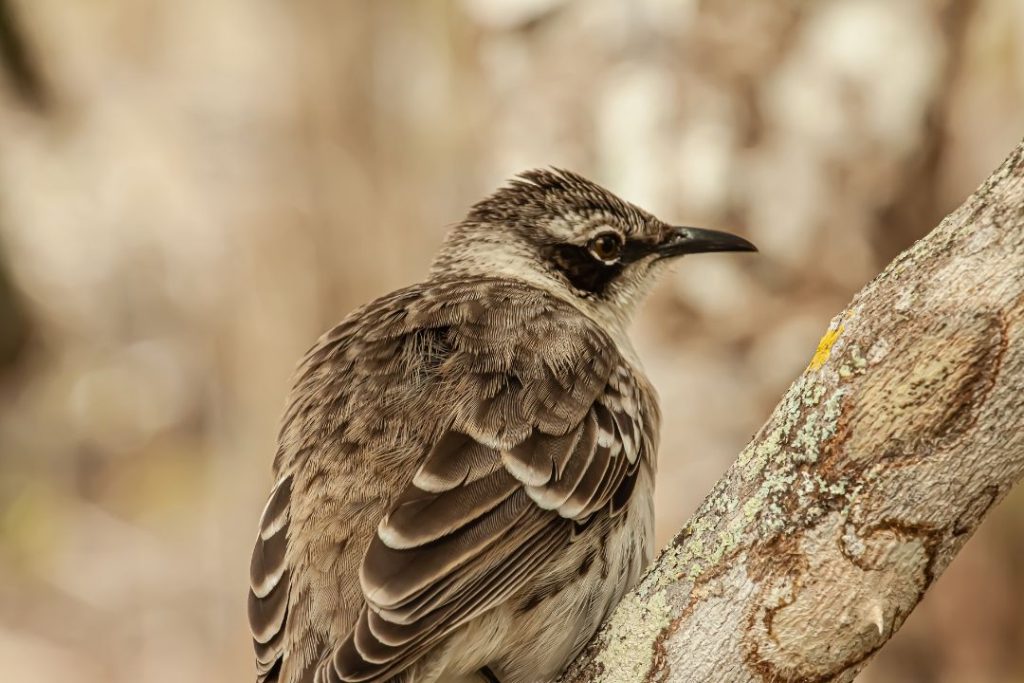
Interactive Birdwatching: How to Spot a Mockingbird
Unearth the sheer joy of birdwatching and the unique thrill of spotting the Floridian Mockingbird. Their distinct characteristics and behaviors offer an engaging challenge for bird enthusiasts and novice watchers alike. To facilitate your venture into this delightful pursuit, let’s explore some key tips and guidelines for spotting a mockingbird.
Familiarize with the Characteristics: The first step to successfully spot a Mockingbird is to intimately familiarize yourself with its appearance and behavior. This bird boasts a plethora of traits that distinguishes it from others, the most striking of which is its medium size, pale-gray colors, and conspicuous white patches on its wings and tail. Watch out for the male mockingbird’s extended performances on prominent perches, by which he displays his impressive wingspans and distinguishing white patches to potential mates.
Master the Melody: One of the easiest and most enchanting ways to detect a mockingbird is by its extraordinary song. The mockingbird, as the name suggests, often mimics the calls of other birds, weaving them into complex melodies that resonate through the air. This bird is infamous for its wide repertoire and frequent repetitions, often repeating the same phrase up to six times before moving on to the next.
Find the Right Habitat: To encounter the mockingbird, target your search at its favored habitats. Mockingbirds have a preference for areas with open ground and shrubby vegetation. They are often found in forests, fields, gardens, neighborhoods, and even city parks. A diverse landscape that includes fruiting trees and dense shrubs can often promise the comforting presence of this melodious creature.
Time Your Search Right: While you can witness this marvelous bird at any time of the day, the best time to observe them is early in the morning or late in the afternoon when they are particularly active. Further, the nesting season, from early spring to late summer, is an ideal period to notice a mockingbird as it will be singing and defending its territory.
Experience the Enthralling Chase: Rather than staying put in one location, move around slowly and quietly, gently partaking in the dance of birdwatching. The mockingbird is an active, vibrant creature that might just lead you on a riveting adventure around its territory. The infrequent flight pattern coupled with its dramatic tail movements is a spectacle to behold, making spotting it a truly rewarding experience.
Beyond the joyous thrill of spotting a Mockingbird, the journey immerses you in the beauty and expanse of nature, allows you to cultivate patience and subtly enchants you into valuing the intricate details of life around you. So grab your binoculars, be attuned to the natural world around you and embrace this fascinating journey guided by the melody of Florida’s charming state bird – The mockingbird.
Creating a Backyard Habitat for Mockingbirds
To those enchanted by the eclectic symphony of the Mimus polyglottos, the thought of creating a backyard habitat conducive to its bewitching presence becomes a charming aspiration. This pursuit, strung together by threads of reverence for nature and affection for this distinctive creature, is not as daunting as it may appear at first. With a prudent combination of suitable foliage, food, and water sources, your garden can transform into an inviting haven for the mockingbird’s splendid concertos.
Plant Choices: Staging the Green Concert Hall
The first step in designing a suitable habitat for these feathered wonders lies in the prudent choice of vegetation. The Common Mockingbird is partial to dense shrubs and thickets which offer a resplendent blend of privacy and accessibility. Native Florida plants like Holly, Mulberry, or Viburnum, with their robust fruit bearing capacities, serve as the ideal foundation for the feathered star’s dwelling.
Food: Offering an Encore to the Gastronomy
A culinary playlist mirroring the diverse diet of the mockingbird is perhaps one of the most direct ways to attract these biome pioneers. Displaying an adaptable palette, the mockingbirds are omnivorous; the variety of their menu is a testament to their inherent resourcefulness. Berries, fruits, earthworms, and several insects are typical favorites. A bird feeder stocked with a healthy rotation of these provisions will indeed catch the roving eye of potential mockingbird tenant.
Water: The Sound of Trilling Refreshment
Nothing invites a mockingbird more profoundly than the sound of bubbling water. A simple bird bath, or a small garden fountain, can serve as a beacon for the mimicking maestros. An important note, however, is to ensure the water depth is shallow, around one to two inches. This is to prevent unwanted guest like mosquitoes from laying eggs, keeping the habitat wholesome and healthy.
Nesting Sites: A Symphony in the Making
Our champion mimic, albeit usually a solitary singer, nurtures its young with remarkable attention when spring arrives. Providing a space to nest, such as a low shrubbery or even an artificial birdhouse placed on a tree branch, signifies a welcome invitation for these feathery artists. Disturbed infrequently, such a spot encourages the mockingbird’s return year after year, transforming your backyard into a familial landmark for generations of this splendid species.
Such harmonious interludes between man and nature embody an almost poetic rhythm, a testament to the enduring symphony of life that pulses gently in the heart of the Florida Mockingbird’s existence. By creating a welcoming backyard habitat, we extend a hand of friendship to these astoundingly versatile creatures, inviting them to share our spaces, and in return, be regaled by their trills and enchanting mimicry.
How does the common mockingbird defend its territory?
Among the captivating repertoire of behaviors that the common mockingbird displays, perhaps their territorial defense remains the most assertive. Naturally quite territorial, these avian virtuosos are known to defend their territories with surprising vigor and daring.
It’s not just the male mockingbirds who are such valiant defenders; females, too, exhibit this spirited behavior. But what is it that they so fiercely protect? These territories are primarily nesting areas and food sources that they guard against both birds and larger animals. Their aggressive pursuit of safeguarding their territories extends even to humans, making their spirited conduct both a spectacle of audacity and a mainstay of their identity.
The common mockingbird’s typical defensive actions carry an air of such tremendous vehemence, it often leaves observing humans both astounded and somewhat amused. Investigations into this behavior reveal the bird uses a variety of strategies to ensure no intruder can easily breach its territory. The prime method of defense is their loud and relentless vocal calls. The point is to unsettle and discourage potential invaders. If their auditory territorial advertisement does not suffice, they upgrade the defense to more outright forms.
Intruders who refuse to back down despite the fierce vocal warning are then met with dive-bombing attacks. The mockingbirds fly swiftly towards the intruder, striking with their bodies and/or pecking with their beaks. They bring the full weight of their relative smallness to bear with quick swoops and agile strikes.
Fascinatingly, the mockingbirds are discerning defenders of their territories. They exercise what researchers call “threat-sensitive” defense, meaning they regulate the intensity of their defense based on perceived level of the trespasser’s threat. A male mockingbird, for example, detects a higher threat in his counterpart than a female and thus enhances his tactics of territorial repulsion. This scales to even recognizing individual humans who have caused them stress in the past.
It’s a remarkable instance of nature’s survival strategy; the audacious defense of the common mockingbird is a spectacle of their resilience and resourcefulness. Whether through vociferous protest or feisty physical retaliation, they reclaim their territories with the bravado of a much larger predator. Their tiny statues belie the dynamic warriors they become when their territories are threatened, nightingales turning into knights.
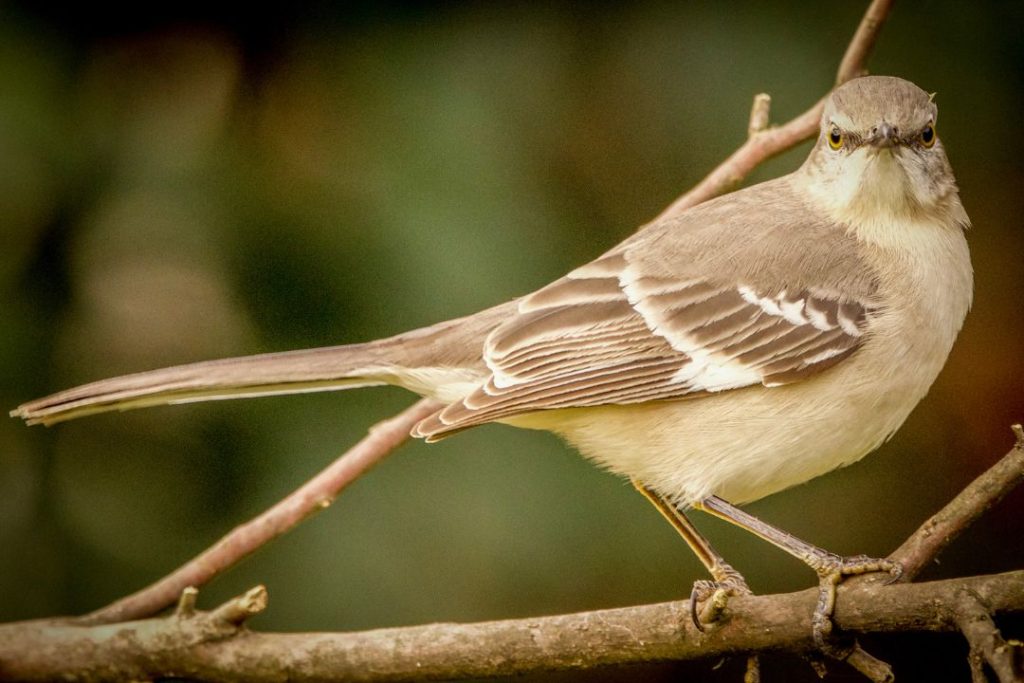
Conclusion
As our journey draws to its close, we find ourselves humbled by our newfound understanding and admiration for the common mockingbird, a creature of grand imitation and boundless freedom. Such a simple bird, often overlooked due to its dull coloration and modest size holds within it profound lessons of resilience, adaptability and sheer artistry.
The very existence of the mockingbird serves as a gentle reminder of the infinite wonders of nature, hidden sometimes in the most unassuming facades. The gift of the mockingbird is not just its capacity for mimicry but also its audacity to express its endless repertoire, an embodiment of nature’s harmonious symphony.
Moreover, the journey of understanding the mockingbird is incomplete without acknowledging its significance in the ecosystem. The bird, like a cog in the wheel, contributes to the balance of life in its own unique ways. It aids in seed dispersion, insect control, and in enriching the fabric of biodiversity while it serenades the Florida skies with songs borrowed and songs uniquely its own.
Let us remember that the mockingbird’s mimicry is not deceit but a survival tactic; not a mockery but an ode to the sounds of life. Their songs are a testament to their adaptability and creativity, traits that we, as humans, could imbibe in our lives.
As stewards of the planet, it is our responsibility to ensure the survival and prosperity of the mockingbird. Its precious existence warbles a critical message about the environment and biodiversity conservation. The onus now rests with us to tune our actions to the rhythm of nature, to create an environment where every mockingbird can continue its melodious pursuit, unthreated and unfettered.
In essence, the common mockingbird, the beloved state bird of Florida, is more than a feathered creature. It is a resonant symbol of nature’s immense capacity for wonder, resilience and change. As we step back from the grand tapestry of our exploration, we can appreciate the intricate threads woven by the common mockingbird, anchoring it firmly within the cultural and natural landscapes of Florida, and indeed, within our hearts.
Disclaimer About the Information Presented Here
Please comprehend that the information we provide about the Florida state bird, the Common Mockingbird or Mimus polyglottos, in this article, is accumulated from reputable and validated resources. However, it is essential to realize that while we venture to bring them together in an engaging and enlightening article, there could always be slight variations in details or facts.
The living world, after all, is full of constant anomalies and surprises, as well as subtle regional differences and alterations over time. Especially when speaking about an avian species as dynamic as the mockingbird, it’s quite a challenge to encapsulate its entire essence perfectly.
Therefore, regard the shared knowledge as a stepping stone to pique your interest and help you embark on a journey of deeper discovery.
Points to Keep in Mind:
- Research is a dynamic process: As new studies are conducted, we continue to understand more about the habits and behaviors of the Common Mockingbird. Always be open to new discoveries.
- Natural variations exist: Not every individual or population of a species behaves or looks exactly the same. Remember, nature loves diversity.
- Conservation status can change: Depending on a variety of factors such as climate change, habitat loss, or human intervention, the conservation status of a species can change over time.
- Your observations matter: Citizen science contributes significantly to our understanding of bird behavior. Therefore, your own casual observations of these intriguing birds can also contribute to scientific knowledge.
In conclusion, while we strive to ensure the accuracy and relevance of the information presented here, we also encourage readers to seek further, deeper knowledge and understanding about the fascinating Mimus polyglottos. Let this be your inspiration, your call to delve into the sensational world of feathered creativities that perch, sing, and dance around us daily. After all, the mystery and charm of the natural world lie in its abundant intricacies and surprises.
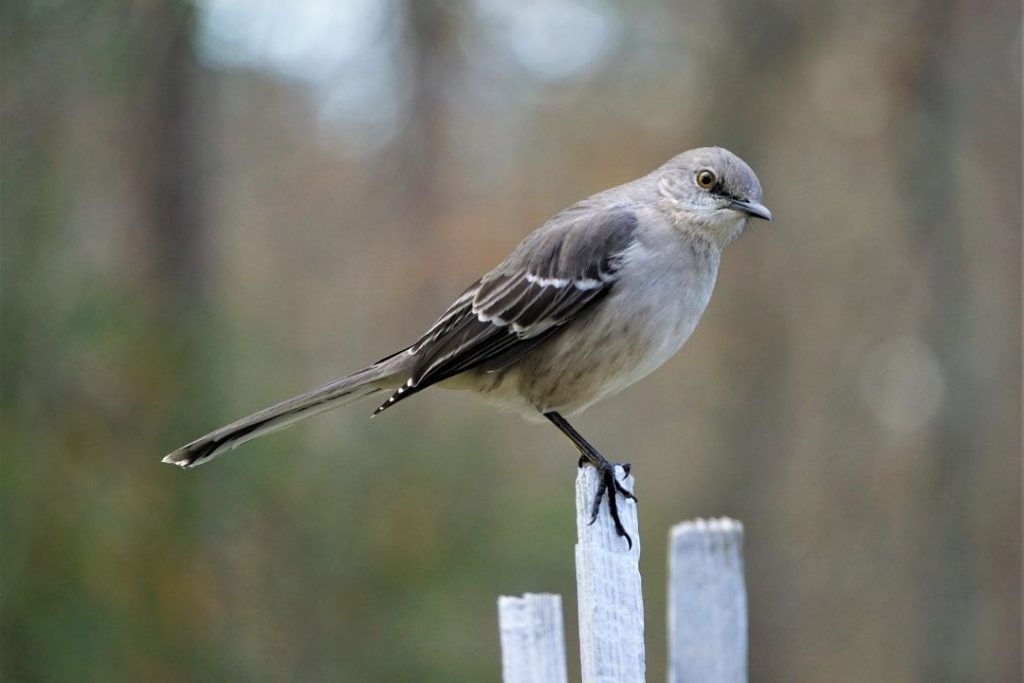
Mockingbird FAQ
Informative and curious, these Frequently Asked Questions (FAQs) are aimed to reveal more about the stunning intricacies of the common mockingbird, Florida’s state bird. Granting you an opportunity to delve deeper, we unravel the fascinating persona of this avian marvel.
What is the lifespan of a common mockingbird?
The common mockingbird, with a fair shake from nature and the absence of predators, can live up to 8-10 years in the wild. Held in avian custody, in conditions where their every need is met, mockingbirds have been known to reach ages of over 20 years.
What does a common mockingbird eat?
The diet of these melodious divas is broad and varied, a testament to their adaptability. Primarily, they feast on insects, berries, and seeds. However, occasionally they may delight in small crustaceans, snails, and even small lizards.
How many eggs does a female mockingbird lay at a time?
Female mockingbirds commonly lay three to four small, light blue eggs at once. There may be multiple broods in a single season, framed by the crescendo of their enchanting song.
Do all mockingbirds sing?
Yes, both male and female mockingbirds are born with the propensity for song. Yet, it’s mainly the males who serenade the dawn with a symphony of assorted calls and trills, a dazzling showcase to attract potential mates and warn off rivals. Though less common, the females, too, reveal their vocal dexterity mainly during the fall.
Why do mockingbirds sing at night?
Mockingbirds’ nocturnal serenades, while melodious, are primarily driven by hormonal changes. Exemplifying their name, these masters of mimicry often imitate the songs of other nocturnal species, attracting mates, and asserting dominance within their territory.
What predators do mockingbirds have?
Despite being savvy adventurers of the skies, mockingbirds are not exempt from natural dangers. Common predators include larger birds such as hawks and eagles, snakes, cats, and even large invertebrates like praying mantises.
The common mockingbird, a distinguished symbol of Florida, remains a melodious beacon within the world of ornithology. Each revelation about its habits and characteristics deepens our understanding, fostering an increased appreciation for this captivating creature.
Mockingbird in Florida: Knowing More
- The common mockingbird is known for its ability to mimic the songs of other birds.
- The common mockingbird is a highly territorial bird.
- Mockingbirds are known for their aggressive behavior when defending their territory.
- The common mockingbird is an excellent singer and can sing up to 200 different songs.
- Mockingbirds are known for their complex and melodious songs.
- The common mockingbird is found throughout the southeastern United States, including Florida.
- Mockingbirds are known for their adaptability to various habitats, including urban areas.
- The common mockingbird is considered a species of least concern in terms of conservation status.
About the Author








